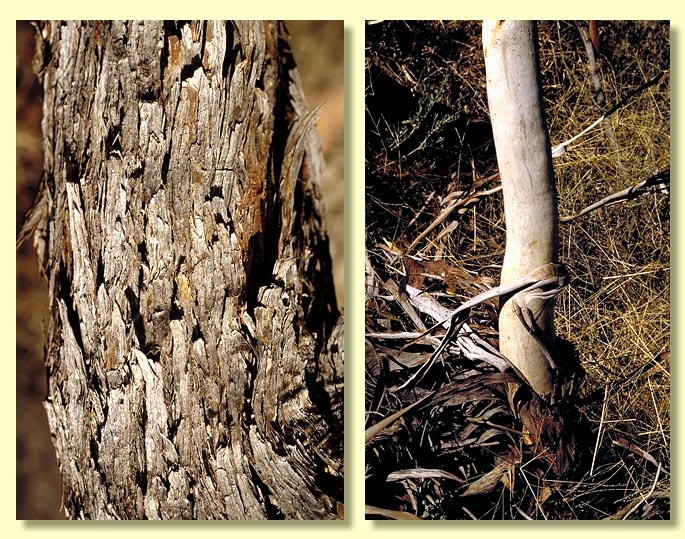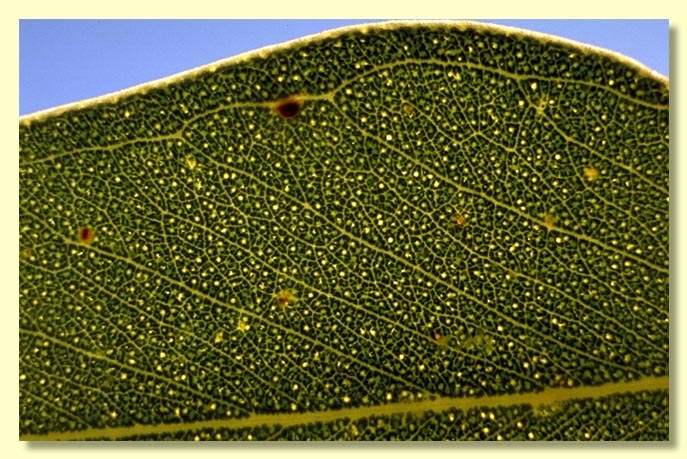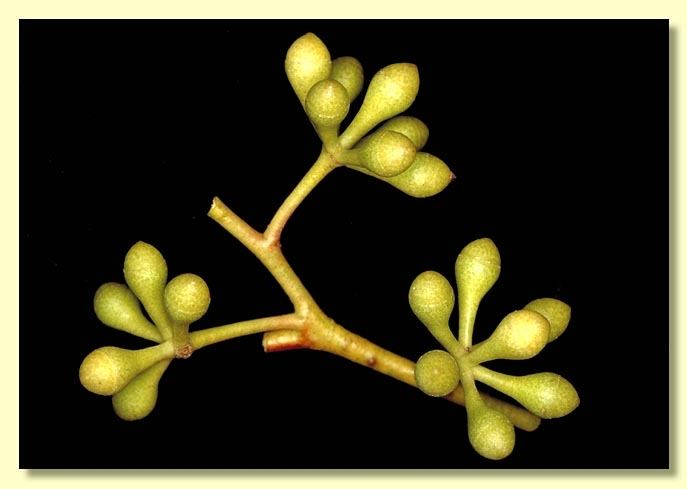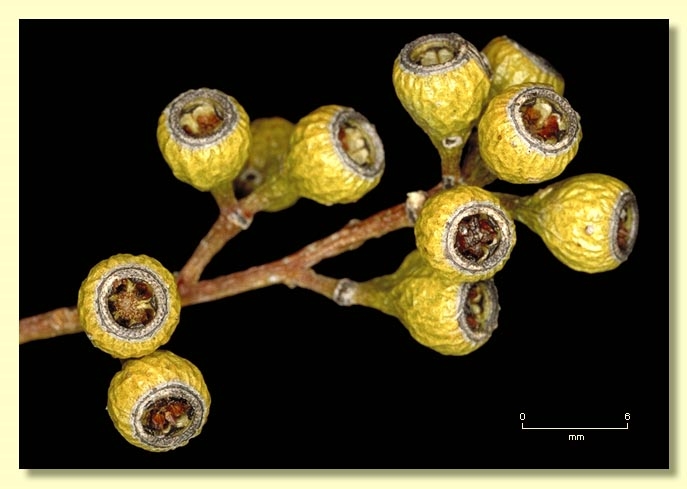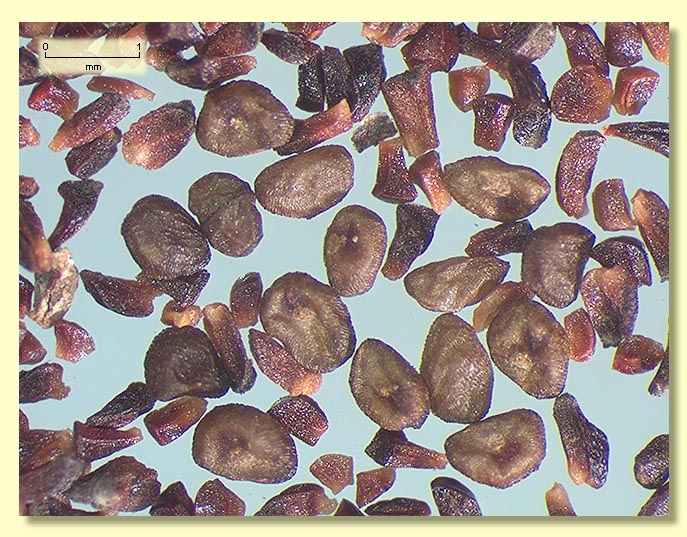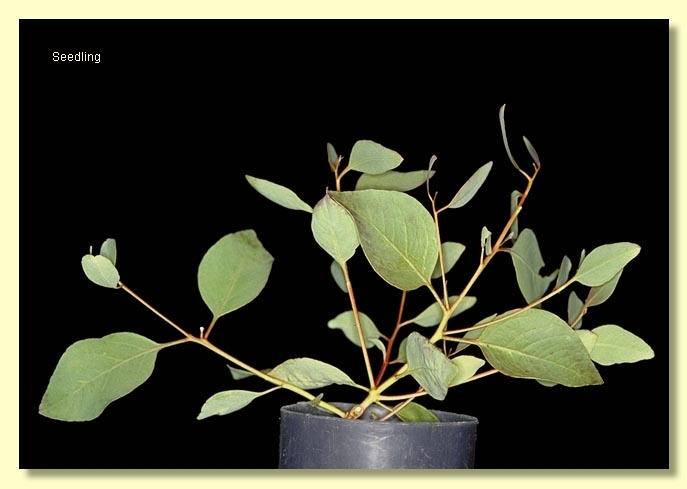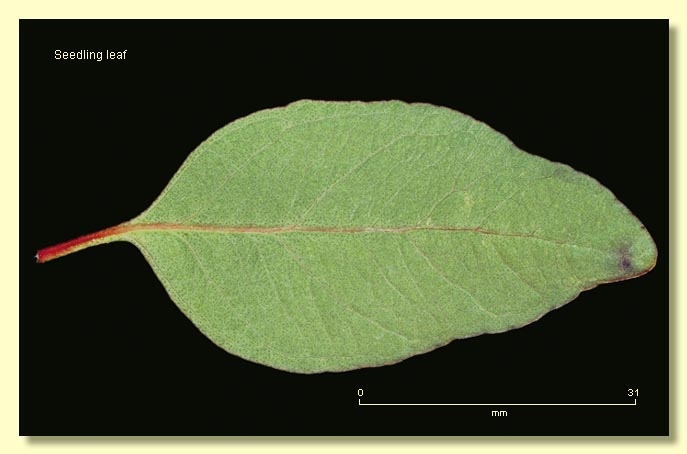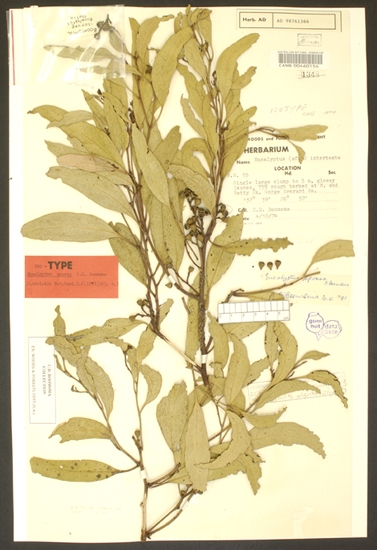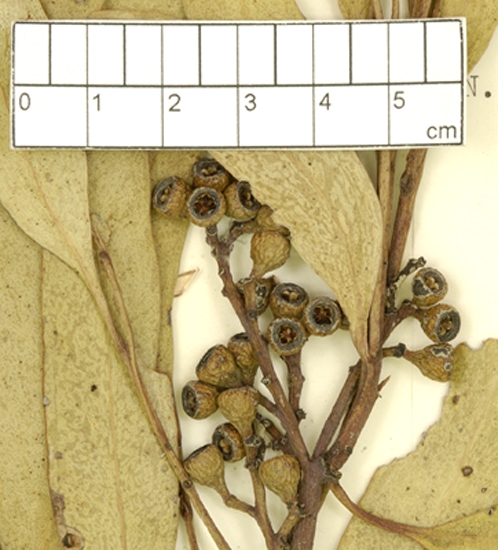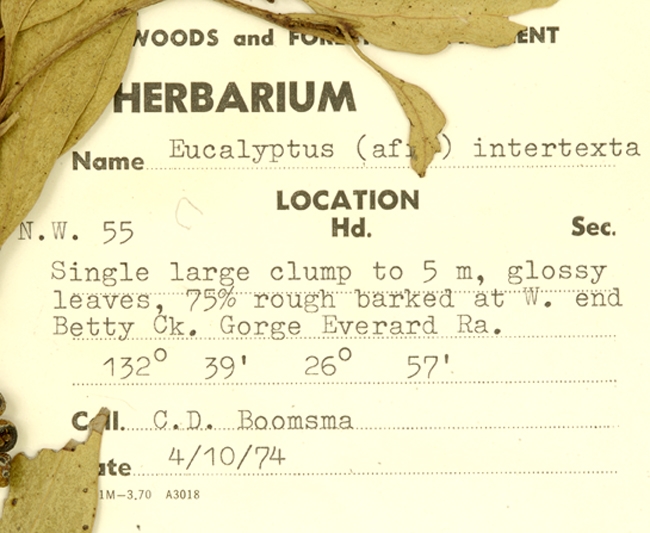Eucalyptus | Symphyomyrtus | Adnataria | Apicales | Buxeales | Amissae
Euclid - Online edition
Eucalyptus sparsa
Bark of larger stems rough fibrous or box-type for up to three quarters of trunk, then smooth above, younger stems smooth throughout, white to pale grey and pale brown, the smooth bark often powdery.
Branchlets sometimes with a few oil glands in the pith.
Juvenile growth (coppice or field seedlings to 50 cm): not seen.
Adult leaves alternate, petiole 1–3 cm long; blade lanceolate, 7–10 cm long, 1.3–2.5 cm wide, base tapering to petiole, concolorous, very glossy, green, side-veins acute, reticulation dense, intramarginal vein present, oil glands intersectional and island.
Inflorescence terminal compound, peduncles 0.3–1.5 cm long, buds usually 7(9) per umbel, pedicels 0.4–0.6 cm long. Mature buds ovoid, 0.4–0.6 cm long, 0.3–0.4 cm wide, scar present (outer operculum lost early), operculum broadly conical to hemispherical and sometimes apiculate, stamens irregularly flexed, anthers oblong to spherical, adnate to and obliquely positioned on filament apex, dehiscing by short lateral slits, style as long as or shorter than floral cavity, stigma blunt to tapered, locules 4 (rarely 5), the placentae each with 4 vertical ovule rows. Flowers white.
Fruit on pedicels 0.2–0.6 cm long, truncate-globose to broadly obconical, 0.4–0.7 cm long, (0.4)0.5–0.7(0.8) cm wide, disc descending, valves 4 (rarely 5), usually enclosed, rarely to rim level.
Seeds blackish brown to brown, 0.9–2 mm long, ovoid to flattened-ovoid, dorsal surface shallowly reticulate, hilum terminal.
Cultivated seedlings (measured at ca node 10): cotyledons more or less reniform; stems rounded to square in cross-section; leaves always petiolate, opposite for ca 5 nodes then alternate, ovate becoming lanceolate, 4–9 cm long, 1.5–3.5 cm wide, dull, green.
Flowering has been recorded in July, August and September.
A mallee occurring in small scattered populations throughout the sandy deserts of north-western South Australia, central-eastern Western Australia and south-western Northern Territory. The bark is rough on the lower part of the stems, the branches white and the adult leaves glossy green.
Within its natural range it is easily told from most other eucalypts by the mallee habit, terminal inflorescences and small fruit (to 0.8 cm wide) with enclosed valves. Two other mallee-box species are found in Central Australia: E. lucens, which differs in the narrow glossy crown leaves, buds that have the stamens fully inflexed and lack anthers on the outer filaments, and narrow seedling leaves. The other species, E. normantonensis, has smaller fruit (to 0.4 cm wide) than E. sparsa, sterile outer stamens but like E. sparsa can have the stamens irregularly flexed inside the bud.
Eucalyptus sparsa belongs in Eucalyptus subgenus Symphyomyrtus section Adnataria (the boxes) because the buds have two opercula, ovules are in four rows, seeds are flattened-ovoid, cotyledons are reniform, and anthers are rigid on the staminal filaments. Within section Adnataria, E. sparsa is part of a subgroup, series Buxeales, further distinguished by being partially rough-barked, having terminal inflorescences and buds that lose the outer operculum early. E. sparsa and close relatives in southern and eastern Australia, E. populnea and E. behriana, have stamens irregularly arranged and all fertile, and very glossy adult leaves. Two other related species occur in north-eastern Australia, E. brownii and E. cambageana, neither overlapping in distribution with E. sparsa and E. behriana.


